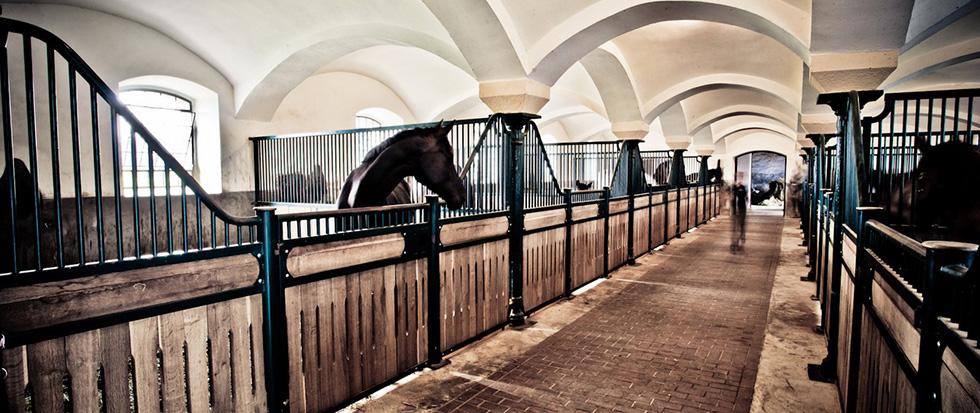Religious Monuments
The Region is full of religious monuments. Religion, being one of the most powerful driving forces of human existence, has given rise to hundreds of churches, chapels, convents, monasteries and pilgrimage places.
Assumption of the Virgin Mary Church in Opava is a very important Gothic monument in Opava. It is a massive three-nave church with a steep roof, an Early-Gothic style tower topped with a Southern-Baroque Laterna and an unfinished north tower with battlements. In 1995 the church was declared a national cultural monument. The church was built by the Order of Teutonic Knights at the end of the 14th century in places where a Romanesque church used to stand from the early 13th century. After a fire in 1758 the church was provided with a new interior, and decoration in the Baroque style was ensured prevailingly by Moravian and Silesian artists, namely the painter I. Raab and sculptor Jiří Lehner. There is a marble tomb of Karl Liechtenstein (Jiří Lehner) dating back to 1767 in the church.
The Minorite Monastery with the Holy Spirit Church
Originally a two-nave gothic Church from the 13th century rebuilt into a one-nave structure with a number of chapels. A 13th century Surrender Chamber as well as a winter refectory with its 18th century fresco decoration has survived in the adjacent complex of buildings of the Minorite Monastery from times of its foundation. The monastery used to serve as a military field hospital, a provincial court, a provincial financial office, and many other important offices. From the 16th century, princely assemblies and estate courts of the Opava Principality used to be held there, and provincial documents used to be deposited there. Today, the Parliamentary Hall and the gothic Chamber are open to public.
St. Adalbert Church in Opava
Primarily - a rebuilt church from the 17th century with a four-annex Jesuitical Academe. In 1814 it was converted into a museum (the present Silesian Provincial Museum) and today the Provincial Archives is situated there.
Dominican St. Wenceslas Church in Opava
The desecrated, originally gothic and afterwards converted into baroque style, church is a very interesting building in Opava. Inside there is an empty space with rare frescos on the walls which remind its past glory. The oldest remains of the frescos date back to the 14th century.
Nowadays, weddings, exhibitions and other social events are usually held there; otherwise is not open to the public.
St. Hedvika Church in Opava
The Church was being built during the period of 1933 – 1938 as a First World War Memorial, but it was consecrated as late as in 1993. The Artist Paul Gebauer and other personalities such as Adolf Zdrazil and Helena Schulzová-Železná participated in decoration of the Church.
Holy Cross Chapel – The Swedish Chapel in Opava
The octagonal mainly brick-work chapel originated in the 14th century. It was founded by Přemek of Opava, one of the Opava Premyslid Dynasty. The name Swedish Chapel refers back to the Thirty-year War when the Swedish protestant ceremonies took place there. These days it serves again as a chapel.
John the Baptist Church in Hlučín
It is a view point of the town situated in the centre of Hlučín next to a former Chateau - today Museum of Hlučín Region. First written comment dates back to 1378. It is a one-nave church building with a Gothic core and presbytery and Renaissance chapel. The church has a new organ since 2006.
Evangelic Red Church in Hlučín
It is situated northwest of the historical core of the town. This Neo-gothic church dating back to1862 was built red fair-faced brick – typical for Silesia. Nowadays, being owned by the town, it is used for various social purposes.
St. Bartholomew Church in Kravaře
A Neo-gothic church built up during the period of 1894-96 as an addition to a white Renaissance tower from the 16th century. Josef Seyfried, a significant local builder, is the author of the church. The church is part of a Neo-gothic complex with a rectory, cemetery and former monastery – today’s municipal office.
Assumption of the Virgin Mary Church in Hrabyně
The famous place of pilgrimage; every summer a traditional saint’s day is held there.
Church of St. Laurence in Píšť
The church dates back to the 18th century. Baroque statues of St. Peter and Paul can be seen there as well as a set of five paintings by Opava painter F. Licht referring to 1784. The church was donated a Virgin Mary Cestochovska painting as thanksgiving. The painting is more than 280 years old and the place plays role of a pilgrimage place.
St. Peter and Paul Parish Church in Hněvošice
The only one wooden Baroque Church in Opava Region from 1730, renewed in 1842; during the period of 2005 – 2008, the roof was completely reconstructed and nowadays the church ranks among the most modern sacred buildings in Opava Region.











